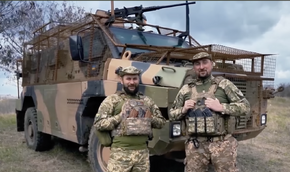But what is the cost (both in terms of financials as well as facilities and personnel) to keep existing stocks of RBS 70 in service?
I could be mistaken but I have taken
@Volkodav to mean that we do not have enough personnel with the right skillsets available to both keep RBS 70 in service as well as introduce some of the newer and more important/higher priority capabilities into service. IMO this would be particularly applicable if the RBS-70 was already something which was not being operated at the battalion level or lower. If Army is going to operate air defence capabilities at a fairly high level attached to something like a Brigade HQ, then I would want something in service which has a range greater than 5 km or less, otherwise only the HQ might get any protection. Not to mention that having something which can detect aerial threats at a distance would be good.
If Australia was presented with the choice (which is effectively what seemed to happen) of either staying with the RBS 70 and keeping them in service, or replacing the RBS 70 with a more capable system like NASAMS, then removing/donating RBS 70 to a country which could actually get some use out of them makes sense. Particularly given that I recall Australia had been looking at getting/fielding vehicle-mounted RBS 70 BOLIDE missile launchers with radar queuing options back in the 2000's, well before the 2017 announcement to seek a replacement for the RBS 70 which led to NASAMS getting selected in 2019.
Also, does anyone know/recall which version of versions of RBS 70 Australia owned when they were decommissioned? Was it the original version Mk 0, or the Mk 1, Mk 2, the BOLIDE or RBS 70 NG? I ask this for two reasons. The first reason being that the earlier the version, the less capable the system and missile with a Mk 1 or Mk 2 having a max range of ~6,000 m and a ceiling of 3,000 m vs. 9,000 m range and 5,000 m ceiling for the RBS 70 NG. The other reason, especially if Australian stocks had significant numbers of the earlier versions, is that most types of launched and guided ordnance has an effective service life, a "shelf life" if you will. If one were to then go and trying to use a munition that was service-life expired had not undergone inspection or remanufacture, it would be quite possible that the munition would do nothing/fail. If Australia had stocks of munitions that was approaching the end of their service life and would need to be inspected or remanufactured, then retiring/donating them does sound like a better option than paying to ensure the ordnance is still good, just so that it can stay behind on a shelf somewhere with newer capabilities getting delivered.

eos-aus.com

